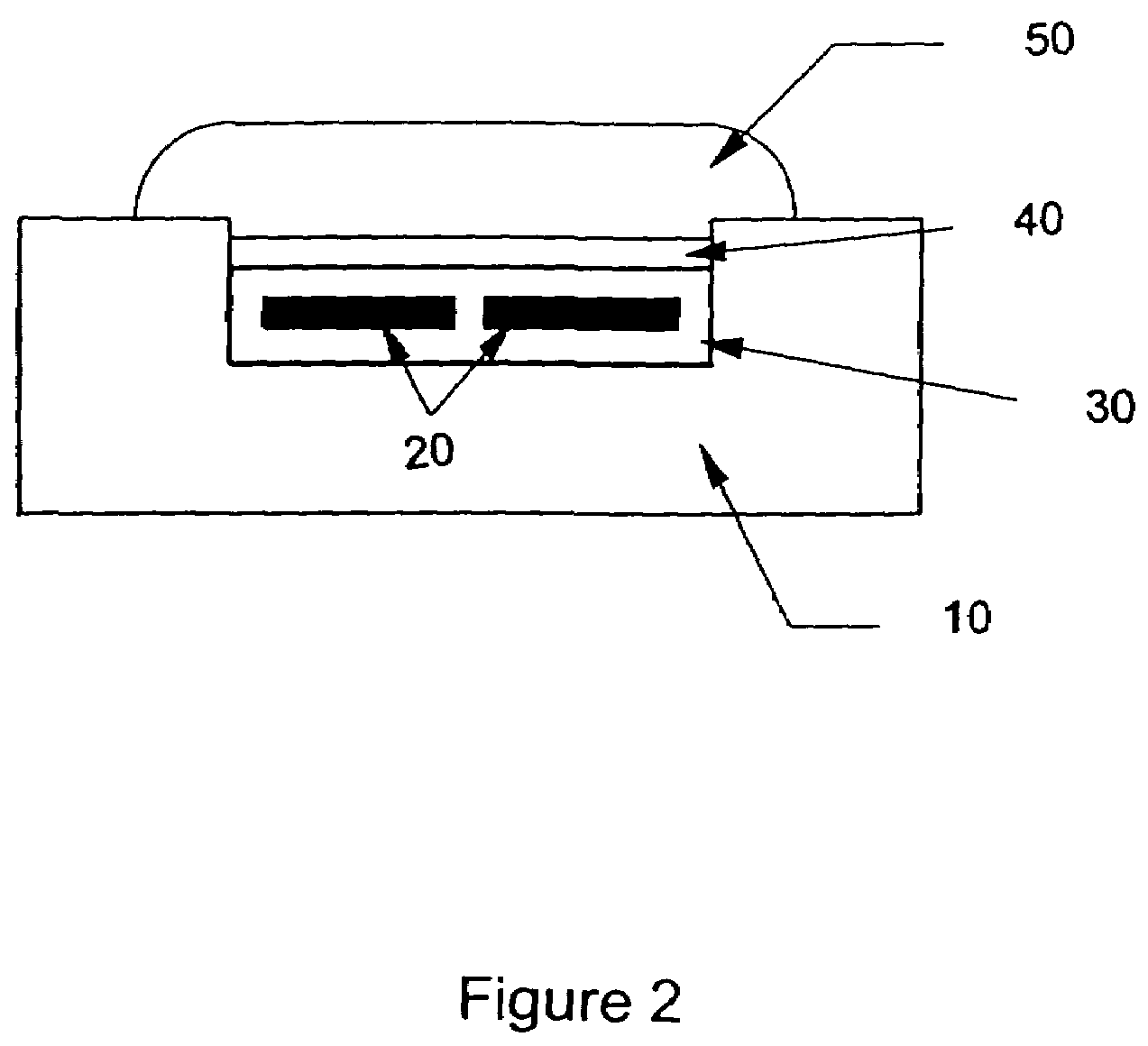Ultrasonic monitor for measuring heart and pulse rates
a monitor and ultrasonic technology, applied in tomography, applications, catheters, etc., can solve the problems of not offering continuous readings, monitors are usually fairly large, and monitors do not provide continuous heart rate readings, so as to reduce cost and power consumption
- Summary
- Abstract
- Description
- Claims
- Application Information
AI Technical Summary
Benefits of technology
Problems solved by technology
Method used
Image
Examples
Embodiment Construction
[0036]a) Definitions and General Parameters
[0037]The following definitions are set forth to illustrate and define the meaning and scope of the various terms used to describe the invention herein.
[0038]The terms “ultrasonic” and “ultrasound” are used interchangeably herein and refer to a sound wave having a frequency between about 30 KHz and about 30 MHz. An “ultrasonic transducer” (i.e., a transducing means) is a device used to introduce sonic energy into a test object (e.g., living subject) and also to detect reflected energy from the object as in the instant invention. Typical of this type of device are piezoelectric crystals which respond to electric pulses from an instrument with a mechanical pulse, and to mechanical pulses (reflected energy) from the test object with electrical energy detectable by the instrument. Ultrasound may also be used as a sound wave imaging technique used to examine a part of the body (e.g., breast, abdomen, heart) in order to evaluate a specific tissue...
PUM
 Login to View More
Login to View More Abstract
Description
Claims
Application Information
 Login to View More
Login to View More - R&D
- Intellectual Property
- Life Sciences
- Materials
- Tech Scout
- Unparalleled Data Quality
- Higher Quality Content
- 60% Fewer Hallucinations
Browse by: Latest US Patents, China's latest patents, Technical Efficacy Thesaurus, Application Domain, Technology Topic, Popular Technical Reports.
© 2025 PatSnap. All rights reserved.Legal|Privacy policy|Modern Slavery Act Transparency Statement|Sitemap|About US| Contact US: help@patsnap.com



